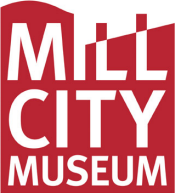Tonight - Public Meeting at Mill City Museum re: Development of New design Guidelines for the St. Anthony Falls Historic District
 Wednesday, April 6, 2011 at 1:00AM |
Wednesday, April 6, 2011 at 1:00AM |  David Tinjum |
David Tinjum |  Time: 6:00pm - 8:00pm
Time: 6:00pm - 8:00pm
Location: Mill City Museum (6th Floor ADM Conference Room) 704 South Second Street
On March 21 The City of Minneapolis announced an upcoming community meeting to discuss the history of the St. Anthony Falls Historic District and introduce the process to develop the new historic district design guidelines. The community meeting will be held at Mill City Museum.
Historic district design guidelines are a local policy and regulatory
tool used in decision-making to evaluate alterations and new development
within the historic district. The new design guidelines will include
guidance on the following:
* Archaeological sites and sites of specific cultural/historical significance.
* Existing and new infrastructure; sites of specific engineering and transportation significance.
* Natural features and open space.
* Existing buildings and the construction of new buildings; sites of specific architectural significance.
The Need
The current Design Guidelines for the district were adopted by the
Minneapolis Heritage Preservation Commission in 1980. In the three
decades since the existing design guidelines were adopted, the district
has seen dramatic change. Access to and interaction with the falls and
the river has evolved, infrastructure has been added, project plans have
been developed and realized, and the understanding and knowledge of the
historic resources in the district have increased. The field of
preservation has also evolved from a disciplinary perspective. It is no
longer sufficient to simply save and re-use a specific collection of
historic buildings or properties. In order to create and sustain
economically successful places, it has become critical to evaluate and
carefully consider how entire environments function as a diverse, but
unified cultural landscape.
The existing design guidelines for the historic district provide a set
of architectural standards for new building construction based on a
series of discreet sub-districts. The existing document was not crafted
in a time when it was considered necessary to address some of the basic
and key features of the district: the falls, the river, industrial
infrastructure, archaeology and landscape features.
The update to the design guidelines will take a holistic approach toward
the many features that make up the essential character of the district -
one that balances preservation, restoration, and rehabilitation with the
opportunity that comes from integrating new infrastructure, new uses,
higher densities, new buildings, and new landscapes. New design
guidelines need to address the entire cultural landscape of the St.
Anthony Falls Historic District to steward the entire collection of
resources into the Twenty-first Century.

Reader Comments